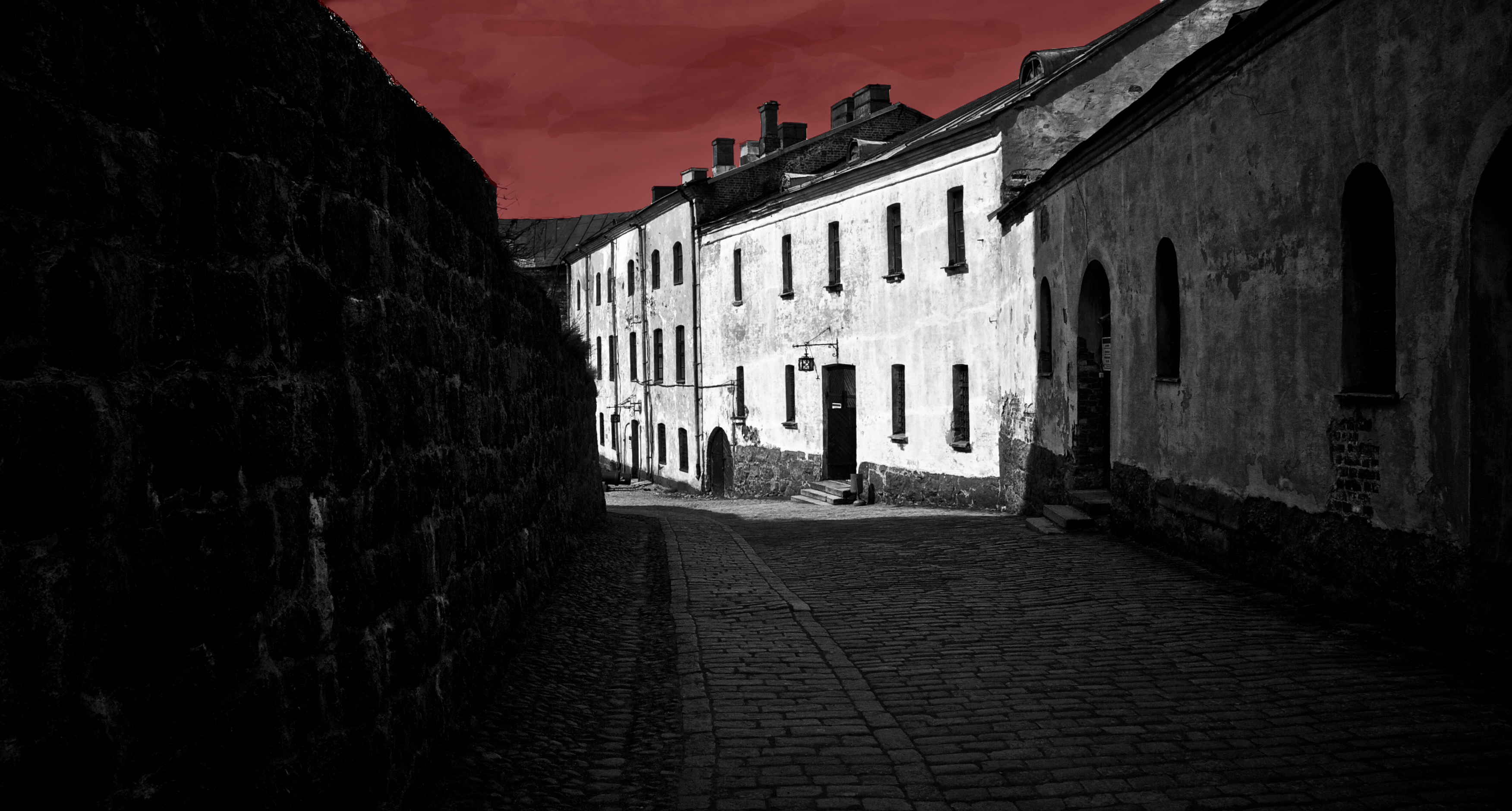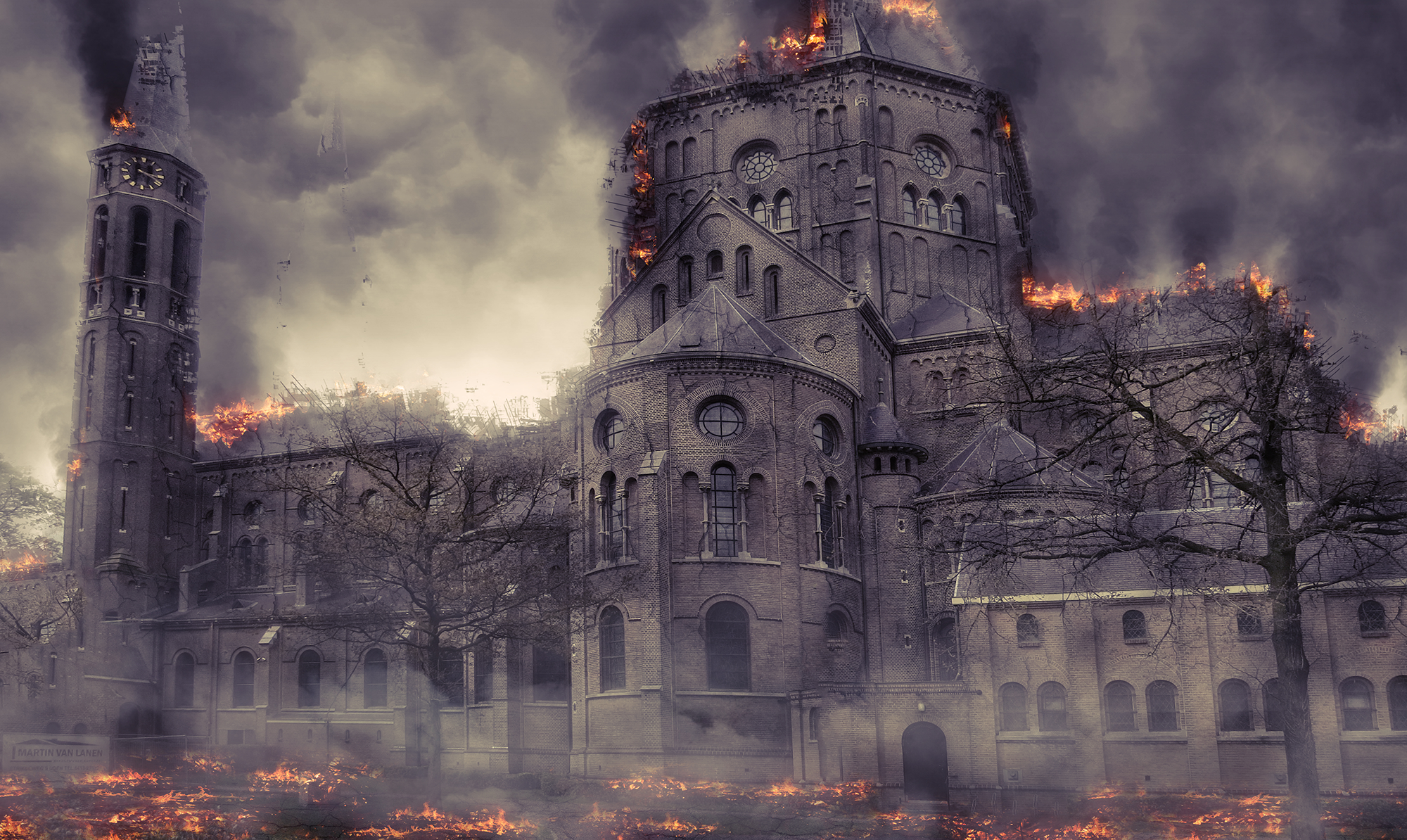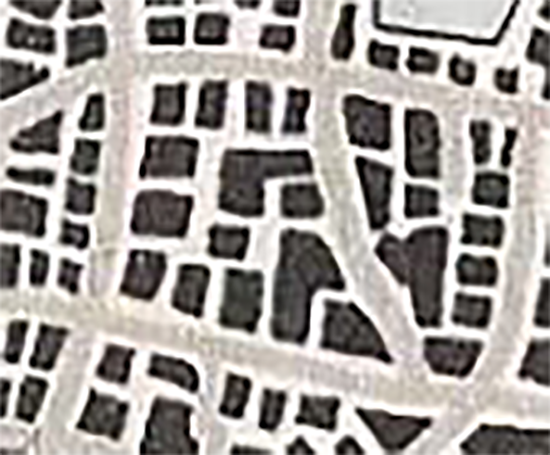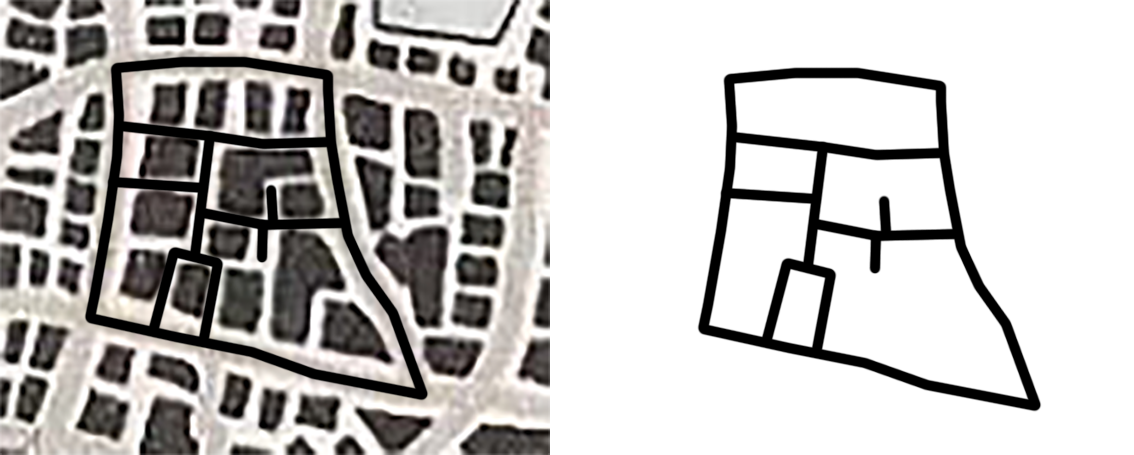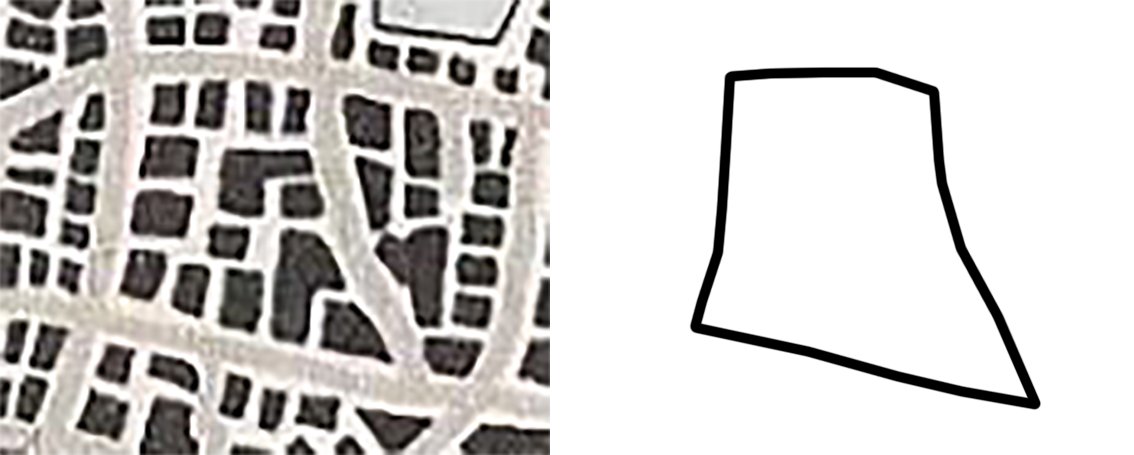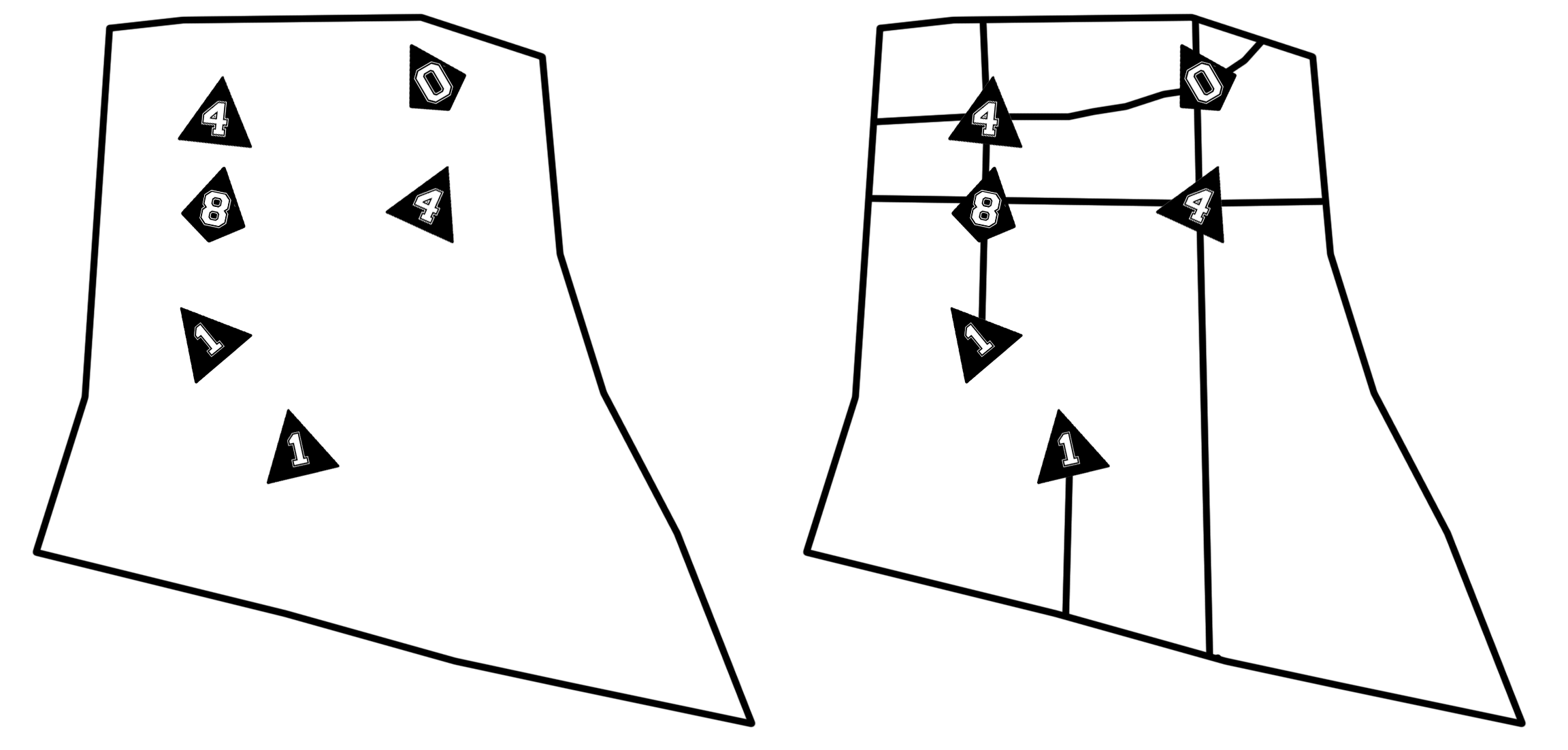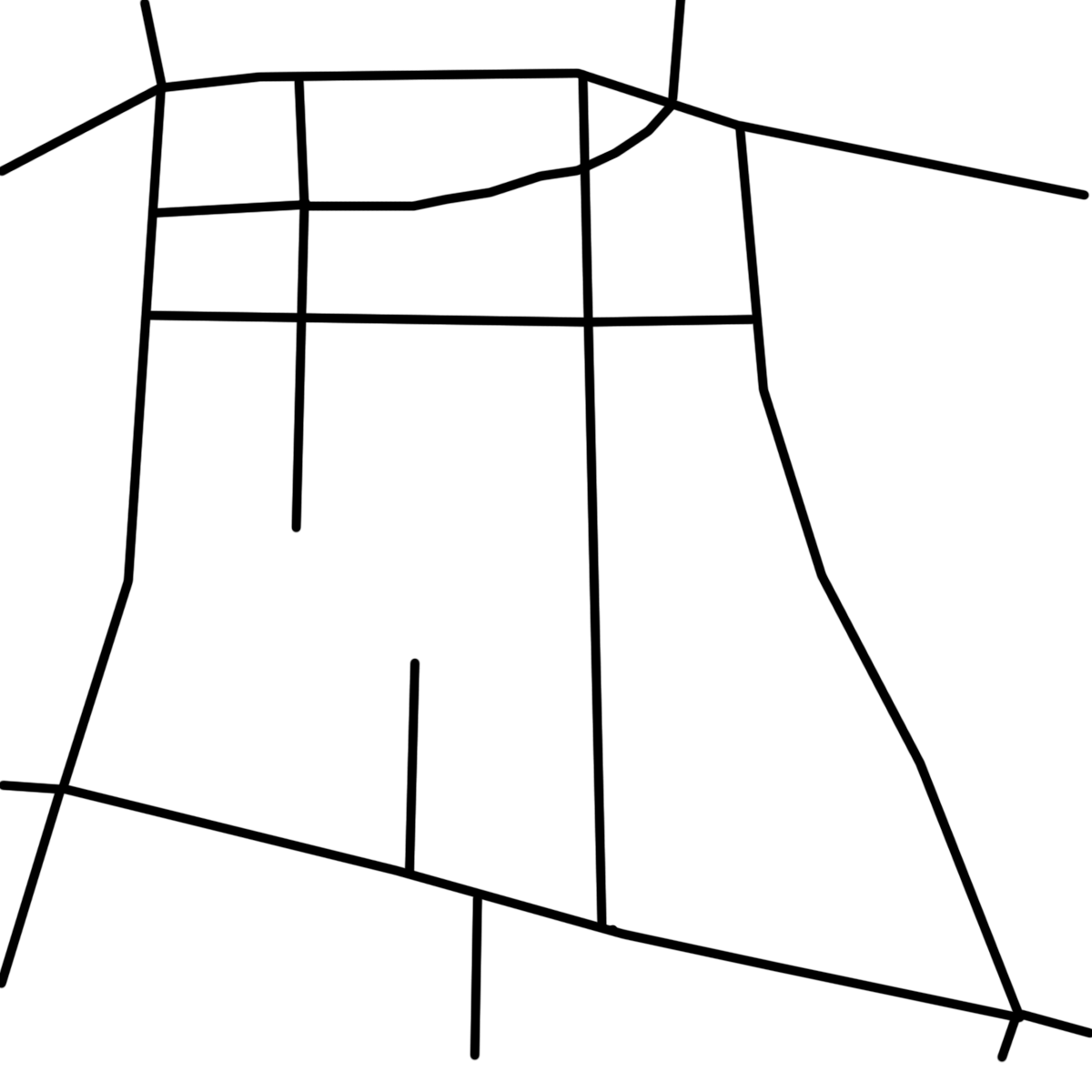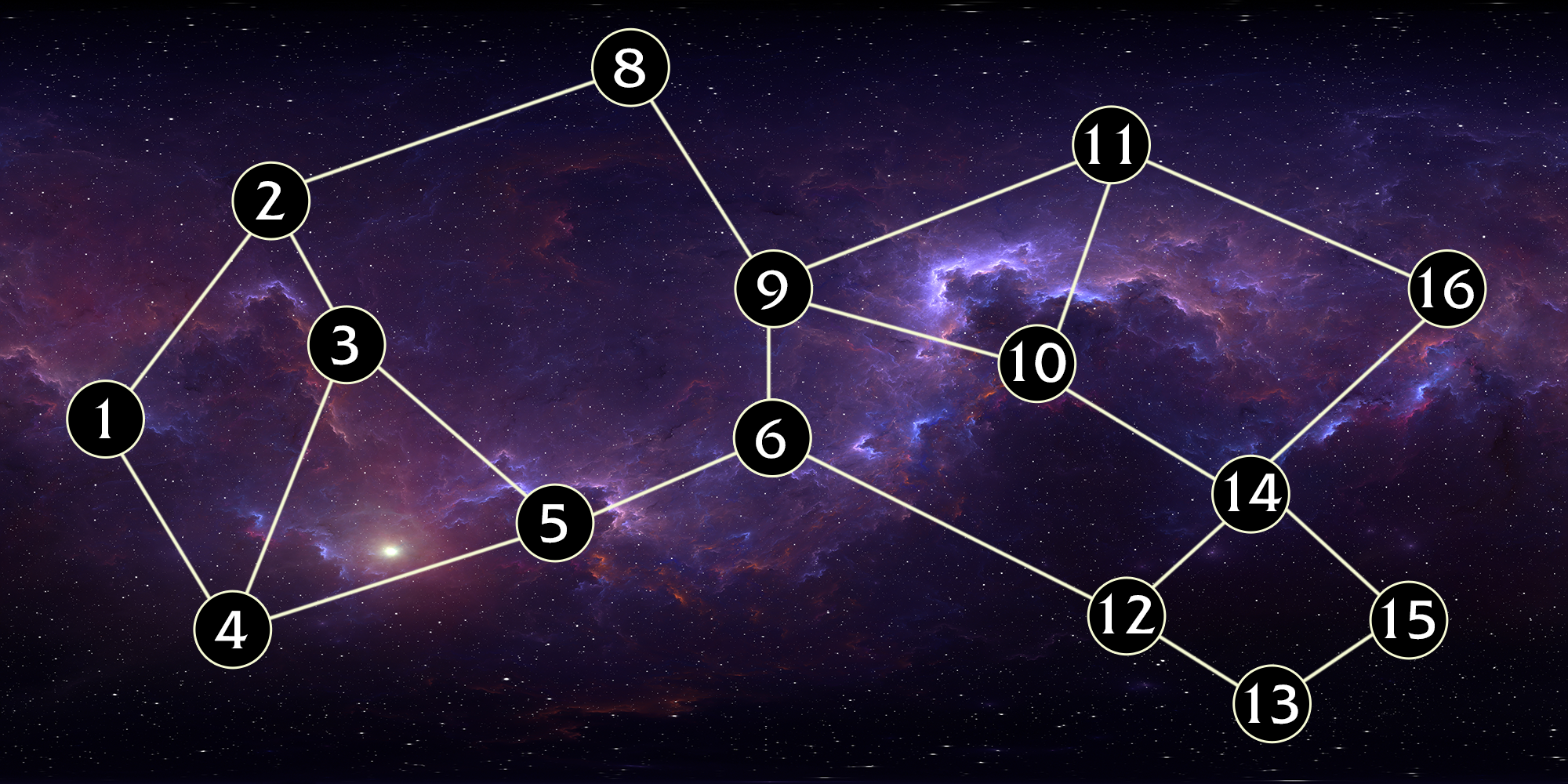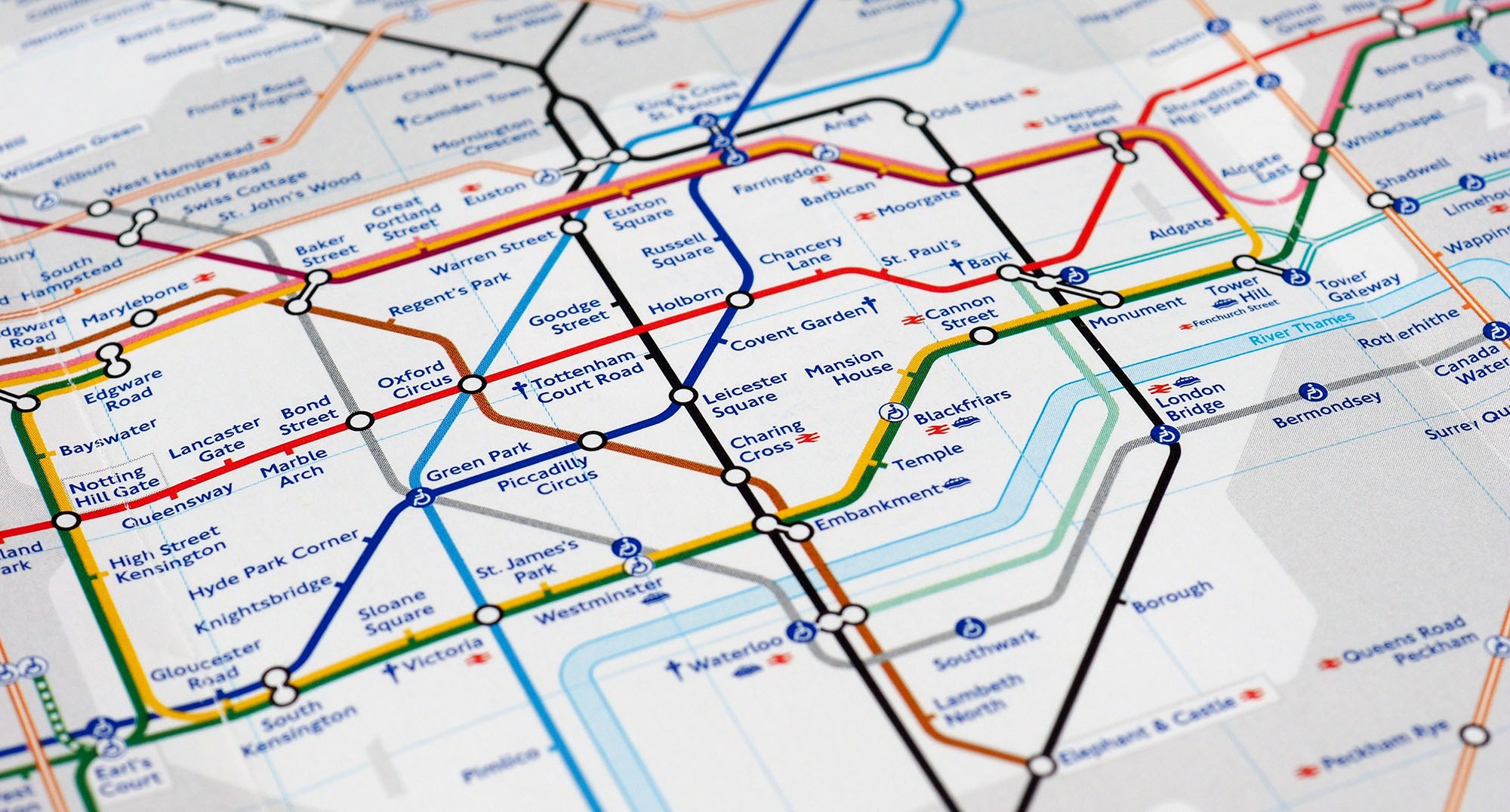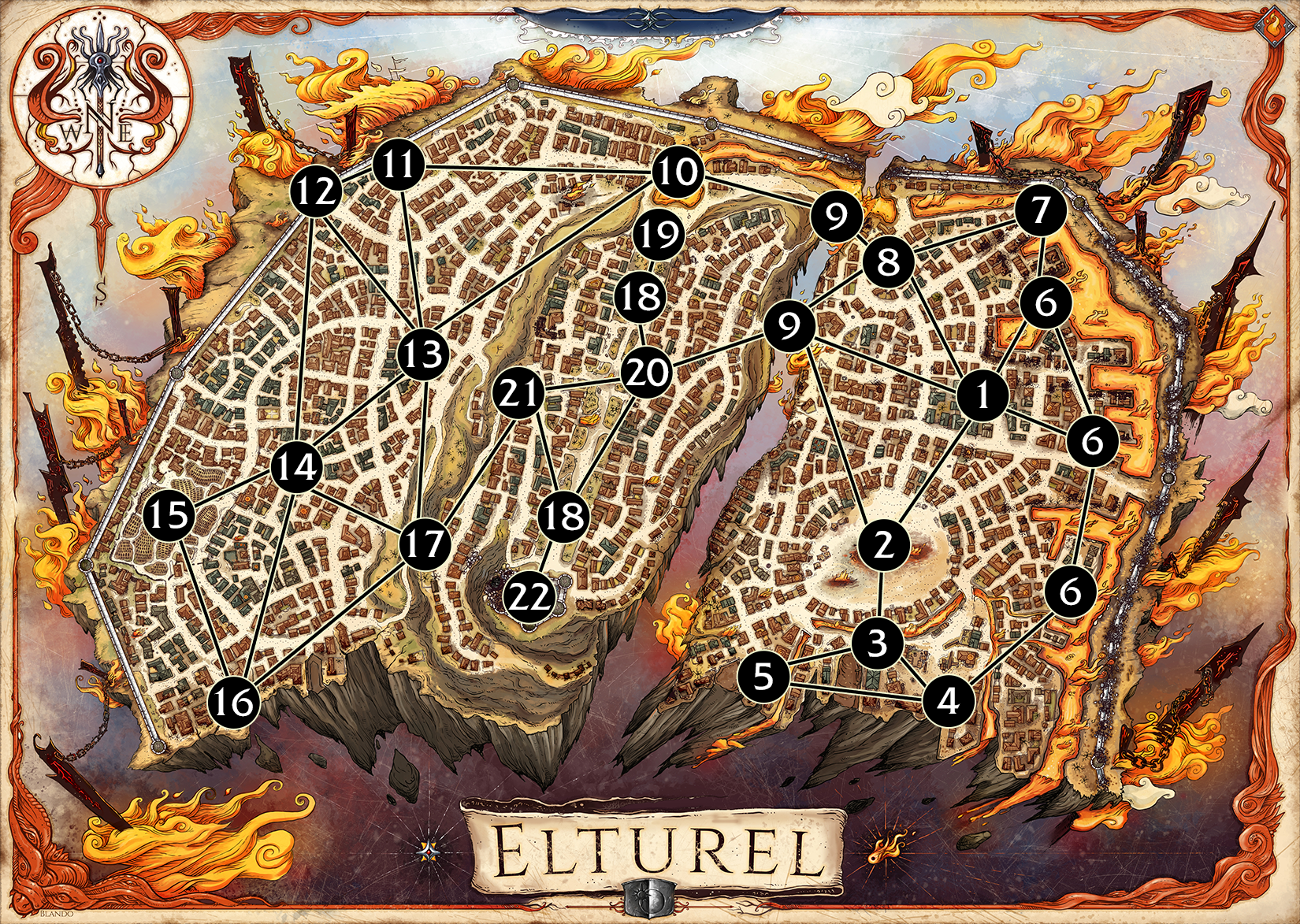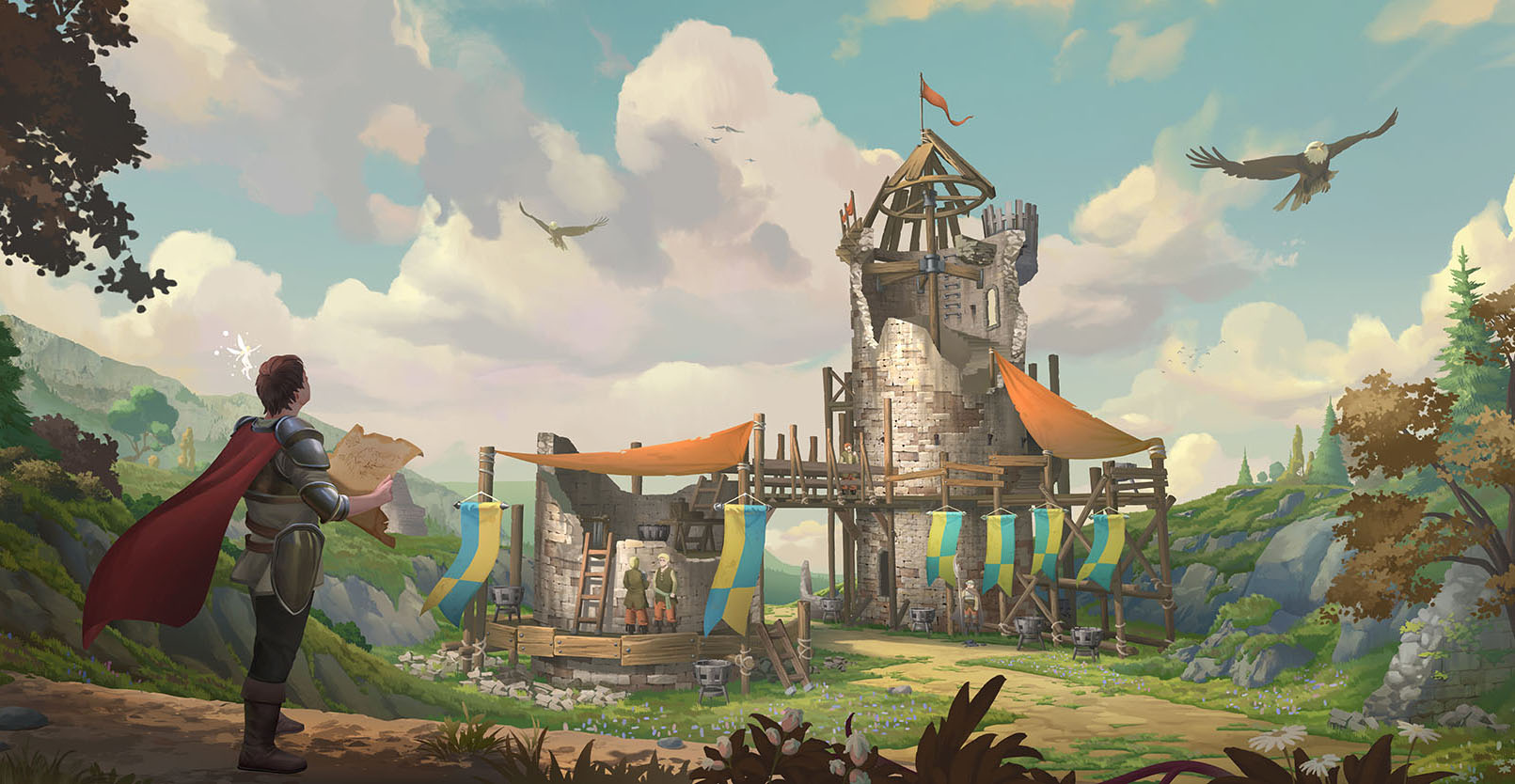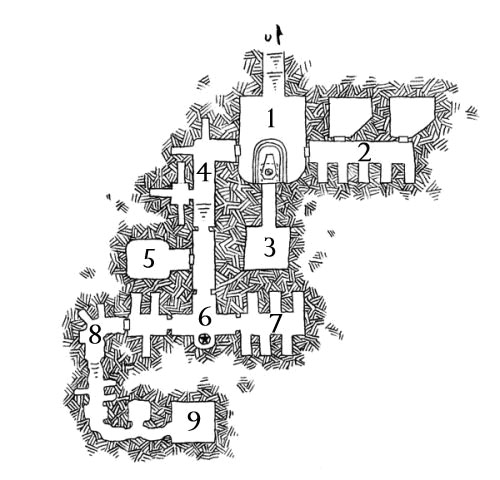These tools are designed to augment the streetcrawling scenario structure used in Part 5B of the Remix. Most of them are procedural content generators that will help you fill in details of the city as the PCs crawl through it.
RANDOM BUSINESSES
The Random Businesses table is not designed to generate every single building in the city. Instead, roll on the table once per street and use the result to contextualize the street as the PCs move down it (e.g., “You turn right at the corner. On the next street you see the remains of a goldsmith’s shop on the right. A fire has gutted it.”). You might interpret the result as a single notable business, or as characterizing the type of business done on the street (e.g., a street with several blacksmiths).
Make sure to record the results on your map, in case the PCs double back.
The table found here is a fairly crude tool. It most notably excludes businesses likely to be found in specific areas of the city (like the Docks) that the PCs aren’t starting out in. (You won’t find chandlers or fishermen here.) You could also improve it by:
- Expanding the table to include more types of businesses.
- Customizing the results by neighborhood.
- Adjusting the results to more accurately model the likelihood of encountering different types of businesses.
- Perhaps biasing the results of your next roll by the previous roll. (So that, for example, the tanneries are less likely to be crowded in right next to the perfumers.)
I recommend checking out Midkemia Press’ Cities or Chaosium’s Thieves’ World as premiere resources if you want more sophisticated tables while having someone else do the work for you.
| d% | Business |
|---|---|
| 01-20 | No Businesses |
| 21-25 | Baker |
| 26-30 | Tavern/Inn |
| 31-35 | Butcher |
| 36-40 | Market |
| 41-43 | Blacksmith |
| 44-46 | Cartwright |
| 47-49 | Public Bath |
| 50-52 | Weaver |
| 53-55 | Cobbler |
| 56-58 | Dyer |
| 59-61 | Fishmonger |
| 62-64 | Potter |
| 65-67 | Rope/Net-Maker |
| 68-70 | Stable |
| 71-72 | Stonecutter |
| 73-74 | Miller |
| 75-76 | Chiurgeon |
| 77-78 | Bowyer/Fletcher |
| 79-80 | Tannery |
| 81-82 | Scribe/Notary |
| 83-84 | Carpenter |
| 85-86 | Glassblower |
| 87-88 | Tinker |
| 89 | Scholarium |
| 90 | Alchemist |
| 91 | Theater |
| 92 | Painter/Sculptor |
| 93 | Goldsmith/Silversmith |
| 94 | Jeweler |
| 95 | Spice Merchant |
| 96 | Cartographer |
| 97 | Perfumer |
| 98 | Religious Chapel |
| 99 | Distiller |
| 00 | Moneylender |
No Businesses: This usually means a purely residential street. It could also mean a green space of some kind.
Alternative: For a busier and more cosmopolitan feel, continue rolling on the table until you generate a “No Businesses” result.
BUILDING DAMAGE: Roll on the Building Damage table to determine the condition of a building. You can roll on a table whenever the PCs enter or inspect a particular building. You should also roll on the table when generating a street.
| d8 | Building Damage |
|---|---|
| 1-4 | No Damage |
| 5-6 | Fire |
| 7 | Looted |
| 8 | Boarded Up / Fortified |
When generating a street, you can additionally roll a d6 to determine if the damage generated on the Building Damage table applies to the specific business you generated, a separate building on the street, or if the entire street has been effected. (If the original building generation roll resulted in a residential street with no businesses, then any result of 1-5 means that a specific residence has been damaged.)
| d6 | Extent of Damage |
|---|---|
| 1-3 | Specific Business |
| 4-5 | A residence on the street |
| 6 | The entire street |
Tip: I specifically designed these tables to use different types of dice. This makes it easy to generate an entire street in a single throw of the dice: Simply roll a d%, d8, and d6 simultaneously and then walk through the results using the appropriate die type for each table.
RANDOM FLOORPLANS
One of the challenges of running a streetcrawl is that the PCs may decide at any time to enter a random building. Here’s a quick method for generating simple floorplans on the fly.
ROLLING THE DICE: As with the street generator, this is a tablemat system. Take a handful of d4’s and roll them onto a sheet of paper. Most buildings are square, so you can just consider the edges of the paper to be the outer walls of the building.
The location where each die lands is a corner with a number of walls extending from that corner equal to the number rolled on the dice. The more dice you roll, the more complicated the interior of the building will be (and complexity generally equates to size). For simple cottages, a single d4 is often sufficient. Here’s an example using 3d4:
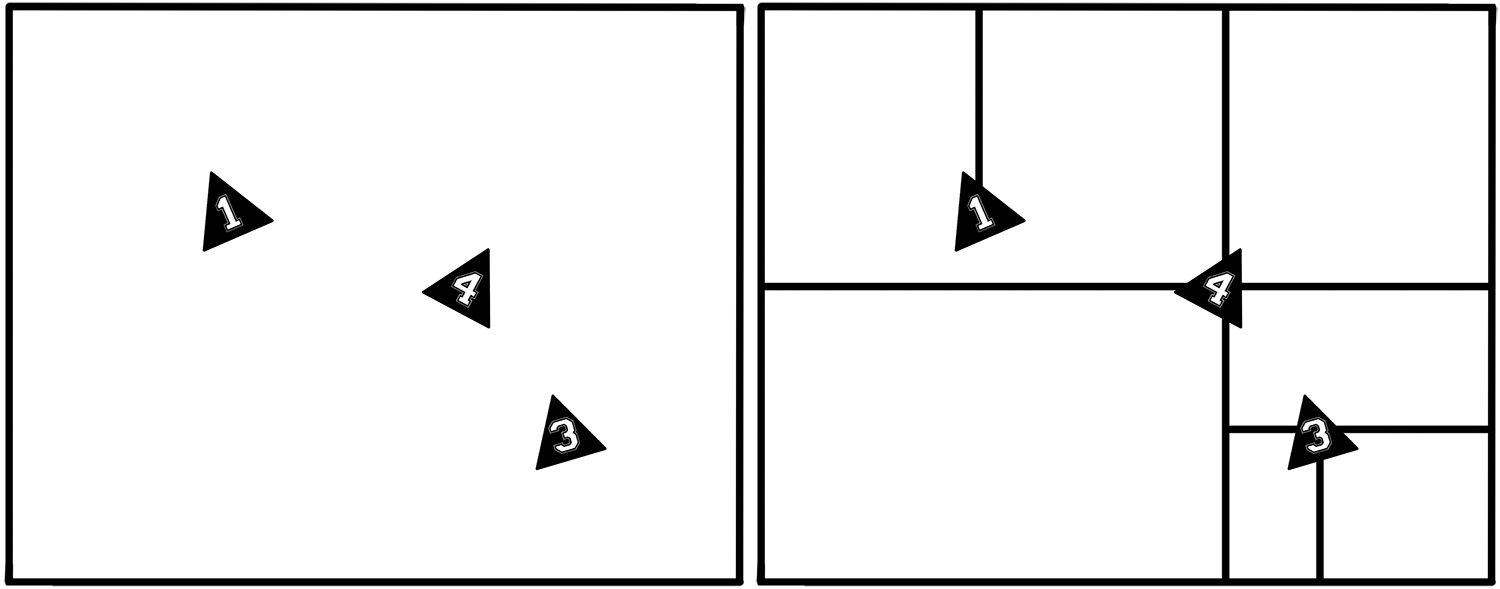
Tip: If a die rolls outside the “walls” of your building, you can ignore it, reroll it, or use it as an indicator of an irregularity in the otherwise square profile of your building. Whatever works.
After drawing your walls, you can remove the dice and add doors wherever it seems appropriate. For example:
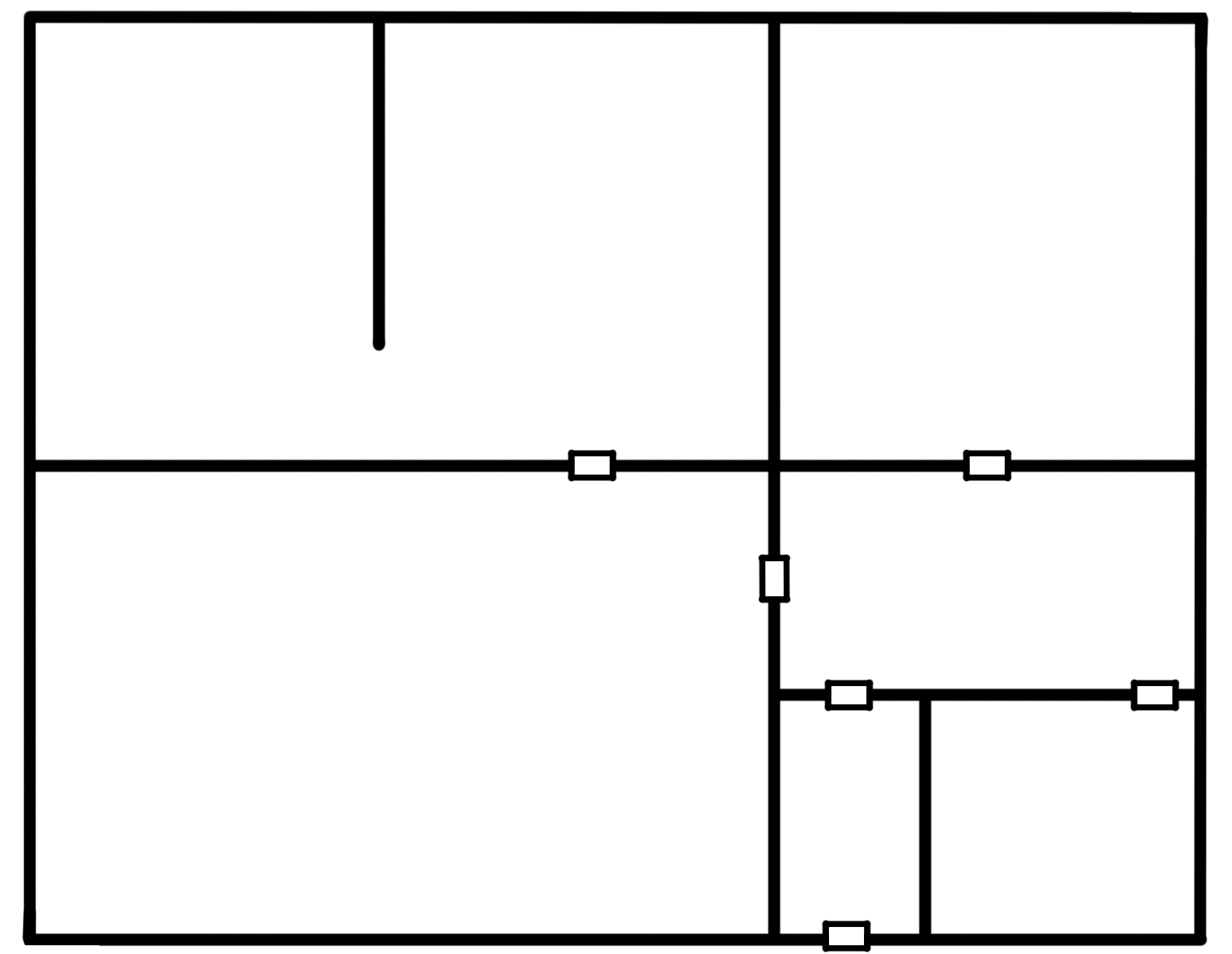
I placed the doors here while imagining a residence (with a short entry hall leading from the front door and a master suite in the upper left corner; you can fill in the other rooms easily). But we could imagine randomly rolling a 77 on the Random Businesses table and then needing to generate the layout for a bowyer:
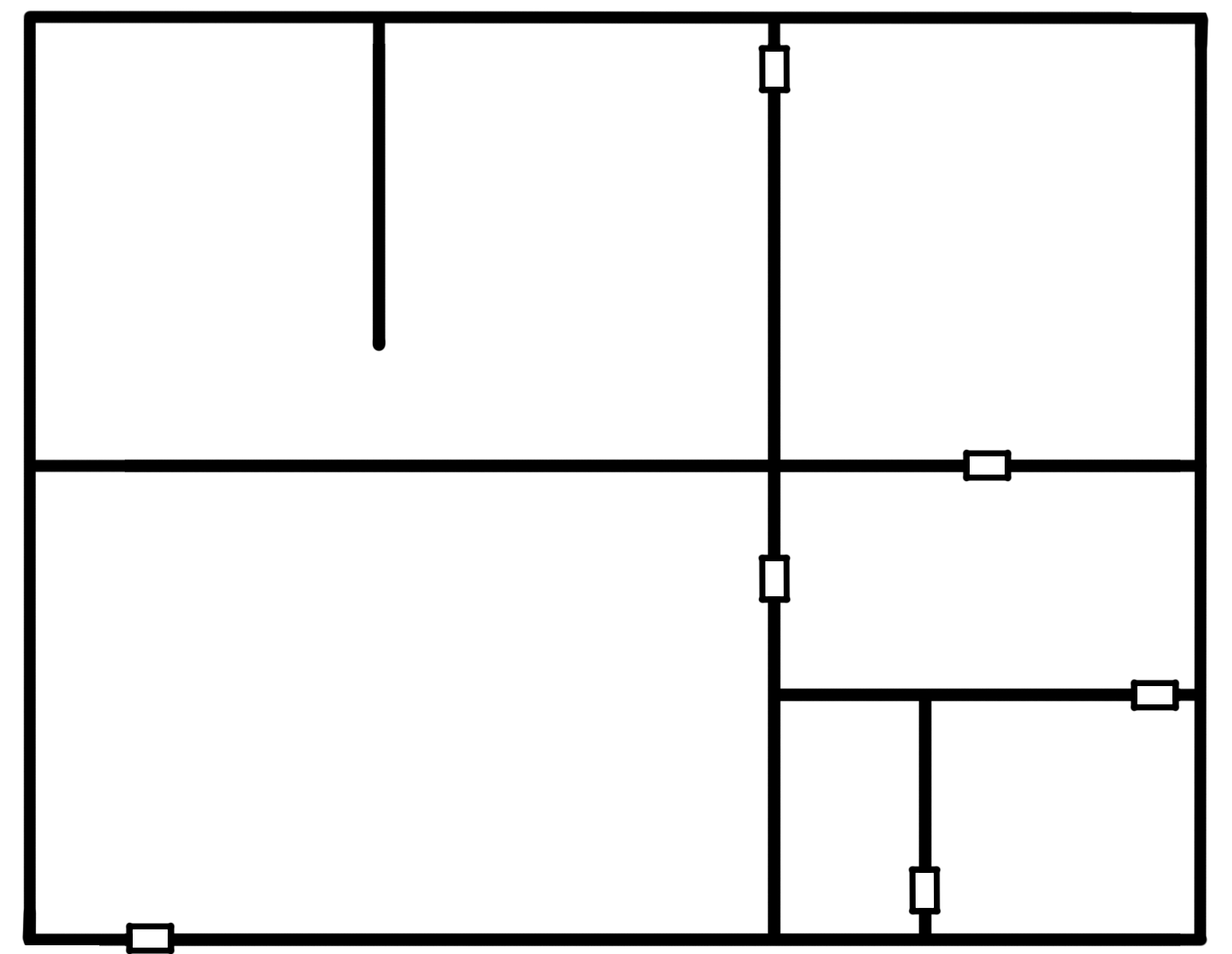
Here you can see how the same randomly generated walls can just as easily give us a shopfront with a door leading into a private residence at the back of the building. The master suite remains in the upper left, but here we find a bedroom with a large closet in the lower right. (Or maybe your imagination might make that a kitchen with attached larder.)
STAIR DICE: Roll a six-sided die as a d3 in addition to the intersection dice to determine the number of floors in the building. If there are multiple floors, where the die lands can be treated as the location of the staircase. If the raw number on the d6 is odd, then the building has a basement (included in the total number of floors). If it is even, then it does not.
You can increase the maximum number of floors, of course, by increasing the size of the die used and interpreting the results in the same way. (Rolling a d8 as a d4, a d10 as a d5, a d12 as a d6, and so forth.)
Rolling 2d3-1 produces a nice bell curve for the number of floors and a building with multiple stairs. (You can limit the number of buildings with multiple stairs by including multiple stairs only if the dice roll doubles, and otherwise placing the stairs at whichever die rolled higher.)
Rolling 2d3-2 (min. 1) produces the homes found in a mid-20th century American suburb if you assume there’s always a basement.
RANDOM NPCs
If you need a random NPC:
- Roll on the Random Businesses table to generate their profession.
- If you get a result of “No Businesses,” roll on the Other Jobs table below.
- Pull a name from the Elturian Names list.
Tip: This is, once again, a fairly crude tool. If you want the gold standard for this sort of thing, try to track down a copy of Central Casting: Heroes of Legend by Jennell Jaquays.
| d20 | Other Jobs |
|---|---|
| 1-4 | Farmer |
| 5-7 | Servant |
| 8-9 | Fisherman |
| 10-11 | Street Vendor |
| 12-13 | Beggar |
| 14 | Sailor |
| 15 | Soldier |
| 16 | Spy |
| 17 | Assassin |
| 18 | Thief |
| 19 | Courtier |
| 20 | Lawyer |
GENERATING A CRISIS: Roll on the NPC Crisis table below to see what type of crisis the NPC is facing (if any) due to Elturel’s fall into Hell. If the PCs run into an entire group of NPCs, you can probably just roll once to determine the entire group’s need.
| d12 | Crisis |
|---|---|
| 1-4 | No Current Crisis |
| 5 | Food |
| 6 | Water |
| 7 | Injured |
| 8 | Trapped |
| 9 | Escort |
| 10 | Under Attack |
| 11-12 | Roll Again Twice |
No Current Need: The NPC probably isn’t happy, but they have a place of safety and they’re well-supplied.
Food & Water: Self-explanatory.
Injured: The NPC has been injured by collapsing structures, fires, looters, devils, or some other form of misadventure.
Trapped: Most likely due to a building collapsing on or around them.
Escort: The NPC needs to get some place (a place of sanctuary, to rejoin their family, etc.) and wants the PCs to escort them there safely. If in doubt, use one of the locations in Part 5C (the NPC effectively becomes a hook for that location).
Under Attack: The NPC is currently being attacked (or hunted) by criminals, devils, or something else.
Roll Again Twice: I’d recommend against stacking this result.
Tip: Structurally, these crises are a way of drawing the PCs deeper into the city. The more need they see, the more important what they’re doing becomes. The more people they help, the more emotionally invested they become. And the act of solving these problems will force them to explore the city and draw them towards the major locations.
FRACTAL STREET LAYOUT
An advanced technique while streetcrawling is to treat the system as having fractal complexity.
By default, you can just think of the system as generating and navigating specific streets. But you could also use it to generate the “major streets” of a larger neighborhood. (For example, this could be useful when the PCs are navigating towards a Distant Goal, as described in Part 5B.) Within each of these “major blocks” you can imagine myriad side streets, and, in fact, you can drill in and generate those side streets by treating each major block as the boundaries of a locality.
For example, you might start by generating a street map that looks like this:
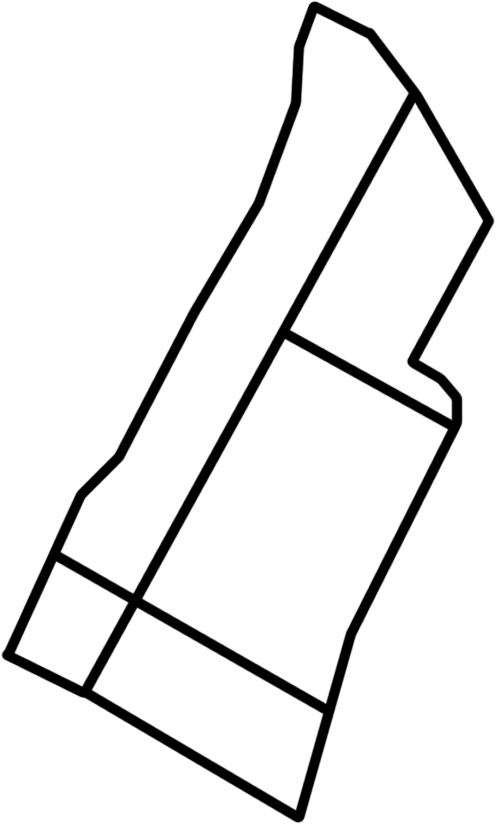
You could then select one of those major blocks and generate the local side streets:
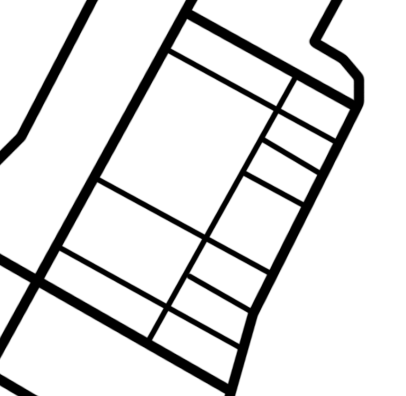
And you can take this even further, using the same system to generate footpaths, alleys, or even the outlines of specific buildings on an individual block. (The latter is a great way of getting non-standard building outlines that you can then use as a seed for random floor plans.) If you did that here, it might look like this:
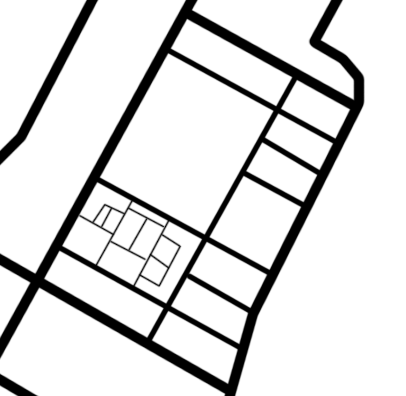
When I demonstrate this system for new GMs, I’m sometimes told that this fractal approach isn’t realistic. “Cities don’t work like this,” one gentleman told me. If you’re feeling the same way reading this, then you might want to know that I pulled a fast one here. Although these are street layouts which could be trivially created using the street generator, in this case I didn’t actually use the generator: I just traced the streets for Morningside Heights in Manhattan.
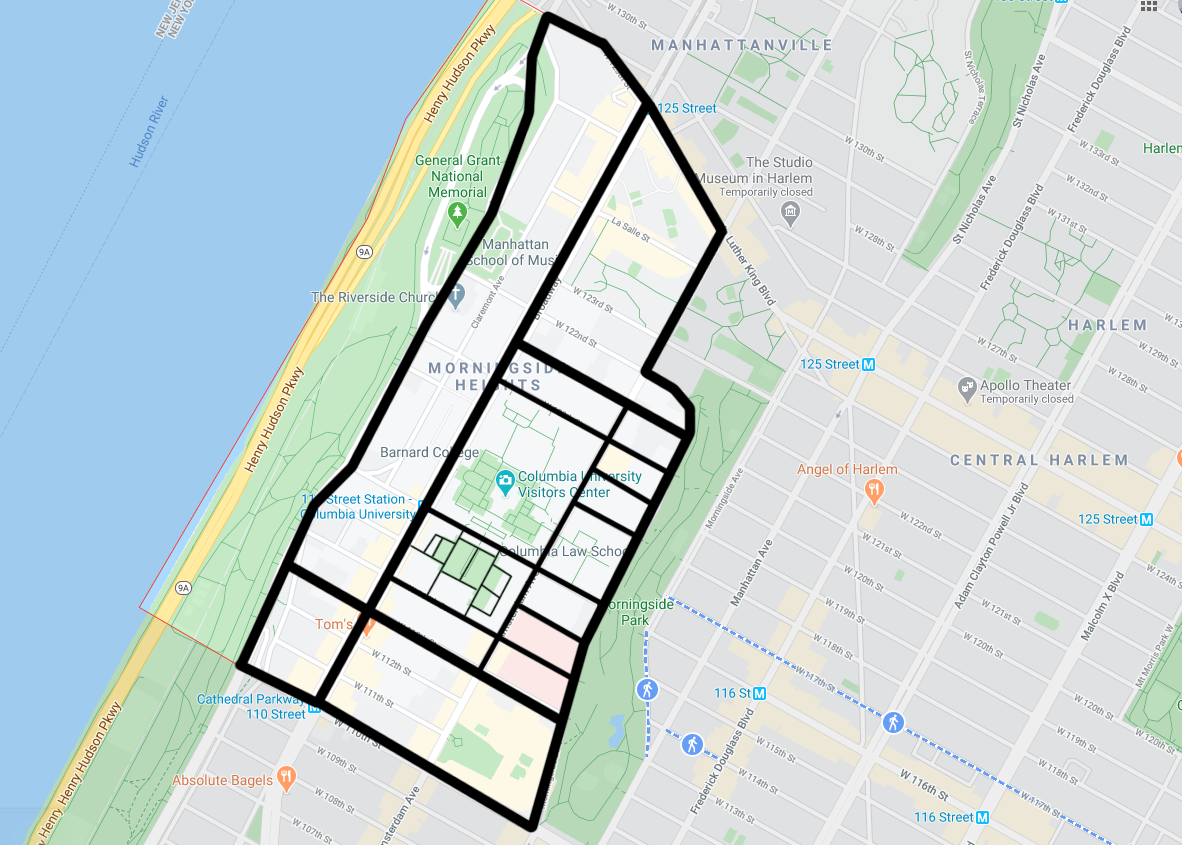
And you can see, looking at that map, how the other individual blocks have similar levels of detail hidden away inside of them. (And that’s even before we crack open the satellite view and street views and really start looking at the details.) This is a good reminder that the real world is always an endless font of inspiration, even for our most audaciously fantastical creations.

